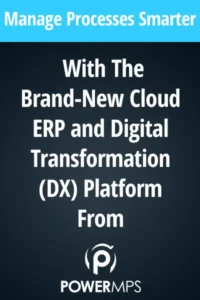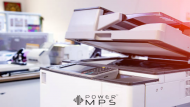We’ve talked about the “incredible shrinking office” and how hybrid offices are becoming far more prevalent in the COVID-19/Post COVID world. But how is the printing industry adjusting to these changing times? How are manufacturers helping Managed Print Services (MPS) providers and their corporate partners address the space and security concerns of the future?
Security First
The most significant issue most businesses see with the hybrid workforce and work-from-home solutions are security for standard computation and printing. Traditional office security models assume those using the company network are safe users, such as employees and authorized guests. This architecture is referred to as “inherent trust.”
However, hybrid workforces divorce computers and printers from the direct purview of the on-site network. And, while these remote workstations typically utilize firewalls, whitelisting, VPNs, and other security, they still provide a more significant number of potential access points for bad actors to exploit. Recent events, such as the Microsoft Windows Print Spooler Vulnerability exposure, only highlight the need for a new method to protect against malicious entities.
This is precisely why many printer manufacturers and MPS providers are recommending a “zero-trust” architecture for hybrid offices. This strategy cuts off all access to the network until the user can be fully verified, and the system can determine whether that user is authorized for access.
Addressing End-User Security Concerns
But rather than rely on corporate IT to ensure printer security, many printer manufacturers are taking steps to help their MPS partners keep end-users safe.
 “Hybrid working is here to stay,” said Louella Fernandes, Director of global insight and research firm, Quocirca, “and managed print services providers must position themselves to assist clients with home printing and information security.”
“Hybrid working is here to stay,” said Louella Fernandes, Director of global insight and research firm, Quocirca, “and managed print services providers must position themselves to assist clients with home printing and information security.”
Xerox, Brother, and HP, three of the biggest names in print manufacturing, have taken additional steps to address these far-reaching security concerns. For example, HP has expanded its product line to introduce its security manager and manageability solutions beyond its 500 series solutions. On the other hand, Brother printers have no internal hard drive, reducing the risk of bad actors gaining access to information accidentally saved on one of their machines. In addition to this unique feature, these printers also offer robust user authentication and other optional security features.
Xerox has taken security a step further. The company has partnered with the renowned security experts at McAffee to equip their latest machines with McAffee Embedded Control software, disk encryption and overwrite, encrypted protocols like SSL and IPsec, audit logs, and user authentication. They also offer additional security options to provide insight into attempted access and threats and ways to address security attacks in real-time.
Hardware Helps
But none of these new security features matter if the machines are too big to fit in a smaller corporate footprint or home office. And MPS providers, faced with this rapidly changing office environment, are quickly losing market share as companies assume that many of their remote or smaller locations will have to find a way to work around the need for employees to print.
Fortunately, printer manufacturers recognize the needs of their MPS partners and the changing business climate in more than just the security space. As a result, top manufacturers have worked hard over the past year to redesign their product output to produce more compact printer options that still meet or exceed business printing standards.
Brother printers have recently launched a series of A4 business inkjets. These machines are specifically designed for small businesses and home offices. However, they are not your standard consumer printer. Instead, they offer high-performance, cost-efficient printing, including wireless connectivity, automatic two-sided printing, and print speeds of up to 20 inches per minute. The A4 series comes in three mid-range models.
“Businesses’ printing needs are changing as companies transform how their employees work,” said Russell Brown, head of sales for the SOHO business unit at Brother UK, of the introduction of the new A4 models.
Expanded Capabilities Of Printer Networking
Xerox has expanded the capabilities for printer networking to include a select few of their more compact multifunction printers for home office workers and small work teams. These devices include the HP LaserJet Managed MFP E42540 and HP LaserJet Managed E40040dn. However, the printers’ ability to be networked through a specific MPS partner may vary.
“For [the MPS] business model, they have to embrace a much more distributed work environment,” said Tuan Tran, President for HP Printing.
And the company is taking every opportunity to make that a possibility for their MPS partners. For example, HP Printing has launched several small print devices in the 400 Enterprise series. These new printers include the same dedicated corporate enterprise firmware as the larger 500 series, at about 40% of the size. The units are also less expensive than their larger counterparts. The company notes the 400 series was launched in response to heightened demand and designed to help partners fully embrace the hybrid workforce and work-from-home movement.
Seizing The Opportunity
“That’s what partners should be thinking about,” said Tran, “–how do we outfit workers in the home in order to…connect back to their collaboration sites? That is the new opportunity.”
MPS providers actively stepping into the smaller office and hybrid workforce are taking this moment to be the partner their companies need them to be. And, in this rapidly fluctuating environment, those needs may be all over the board. Whether your partners need additional security, printing analytics, remote printing solutions, or simply an opportunity to cut or monitor costs, innovative MPS providers have a more prominent role to fill than they may believe.
And, systems like PowerMPS are here to help these MPS providers grow with online reporting tools, custom online storefronts, subscription tools, customer management, and much more.







